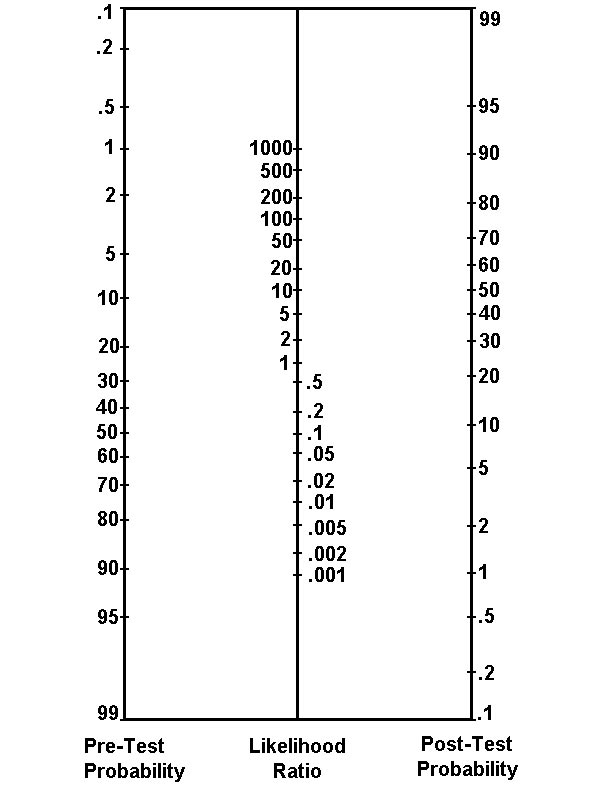Likelihood Ratios
Introduction
The likelihood ratio (LR) is the probability of finding an event or positive diagnostic test in a patient with the disease, divided by the probability of the same finding in a patient without the disease. It is a way of measuring the value of positive or negative diagnostic test.
The likelihood ratio is a way to determine how a positive or negative test result will affect the likelihood someone has a disease. Conversely, it also answers the question, "If a patient has disease Y, how likely is this patient to have a positive X test result compared to patients who do not have the disease.
Unlike negative and positive predictive values, likelihood ratios are not affected by prevelance.
Positive Likelihood Ratio (LR+)
The LR+ the the probability of a patient who has the disease testing positive divided by the probability of a patient who does not have the disease testing positive.
LR+ = sensitivity / (1 - specificity)
Negative Likelihood Ratio (LR-)
The LR- the the probability of a patient who has the disease testing negative divided by the probability of a patient who does not have the disease testing negative.
LR- = (1 - sensitivity) / specificity
Interpreting LRs
LR = 1, means that there is no change in the likelihood of the disease
LR >1, means that there is an increase in the likelihood of having disease
LR <1, means that there is a decrease in the likelihood of having disease
Practically speaking, in clinical practice you have a pretest probability of a patient having a disease based on things such as their history of present illness or physicial exam. You obtain further testing such as blood tests or imaging which has a likelihood ratio (either positive or negative) that will influence your pretest probability of that patient have a particular disease to a post-test probability. This factor that changes your pre-test to post-test probability is the likelihood ratio which can be plotted on the nomogram below.




